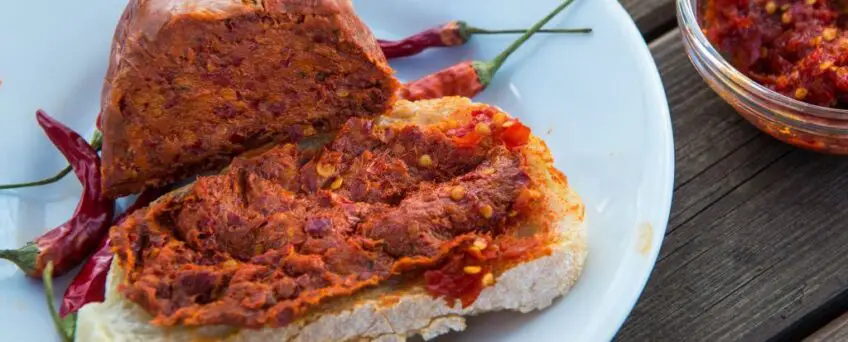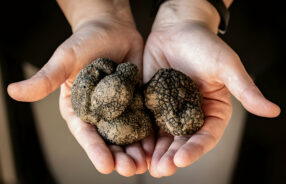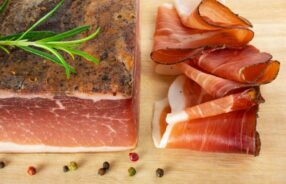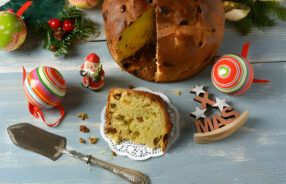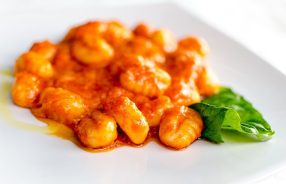’Nduja, History Of The Calabrese Delicacy
The origins of the Calabrian ‘nduja are not entirely certain, but the most accredited thesis traces its origins back to the Napoleonic period (1806-1815). It seems that in that period, Gioacchino Murat, Napoleon Bonaparte’s brother-in-law, had ordered his men to distribute a tripe-based French salami free of charge, to enter the good graces of the Lazarus of the Neapolitan state. This cured meat had a name that sounds particularly familiar today: andouille.
Apparently, it was successful among the Calabrians, who appropriated the idea by modifying the recipe based on the resources of the time: fat, pork rinds, offal, and, of course, local hot peppers.
Since then, the preparation has been refined, and today the ingredients include meat, fat such as lard and bacon, and finally hot peppers.
What is ‘nduja, and how is it made?
The ‘nduja is a spreadable salami made with meat, pork fat, and hot pepper, all stuffed into plain and seasoned casings. It has an elongated shape and a large diameter. The color is a beautiful and bright red, which almost “warns” the consumer of the conspicuous presence of hot peppers. Its texture is practically unprecedented for cured meat; soft, almost creamy, which makes it suitable for many different preparations.
The taste of the real Spilinga ‘nduja is full and enveloping, it tickles the taste buds in the mouth thanks to the balance between the soft fat, the pieces of ground peppers, and the right degree of flavor. Together with the ciauscolo from the Marches, the Calabrian ‘nduja is the most popular Italian spreadable salami in the country.
The ‘nduja is a typical preparation of poor Calabrian cuisine, created to use the last scraps of the pig. Originally for its production, the following were used: stomach, intestines, spleen, lungs, esophagus, heart, and trachea, but also other waste such as the soft parts of the back of the mouth, the pharynx, the fleshy portions of the head and the lymph nodes.
In general, the fat used for ‘nduja came from the waste of other preparations, such as suet, soppressata, or sausages. The stuffing is put in plain casing, also called orba, the final part of the large intestine. In some cases, ‘nduja is lightly smoked by burning robinia or olive tree essences. It is subsequently aged in a cool, dry, and hygienically protected place, for a period ranging from a minimum of 3 months to a maximum of 6, depending on the size of the sausage. The conspicuous presence of hot pepper, with well-known antiseptic and antioxidant properties, means that this cured meat does not need preservatives.
The ‘nduja of Spilinga
Today the original ‘nduja is produced throughout the province of Vibo Valentia, and in general in various parts of Calabria, keeping the original recipe and procedure intact.
The place of origin of the salami, which holds the title of “City of ‘nduja”, is undoubtedly Spilinga, a town of just over 1400 inhabitants on the slopes of Monte Poro, south of Tropea.
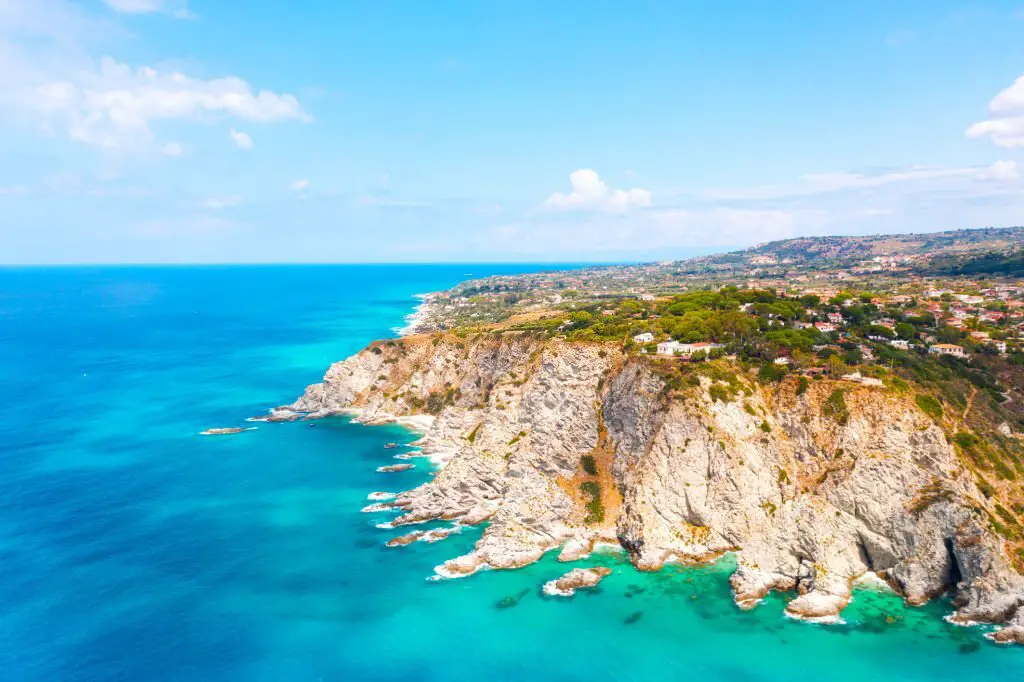
For lovers of festivals, folklore, and popular festivals, it is useful to know that since 1975 to this day, Spilinga hosts every year on August 8, “The ‘nduja festival”, an event halfway between history, mythology, and folklore. On this occasion, in addition to tasting the popular Calabrian cured meat in all its guises, it is possible to attend popular dances linked to the history of the area, such as the dance of the Giants Mata and Grifone or the traditional “U Cameiuzzu i focu”, which celebrates the expulsion of Saracens from Calabria.

